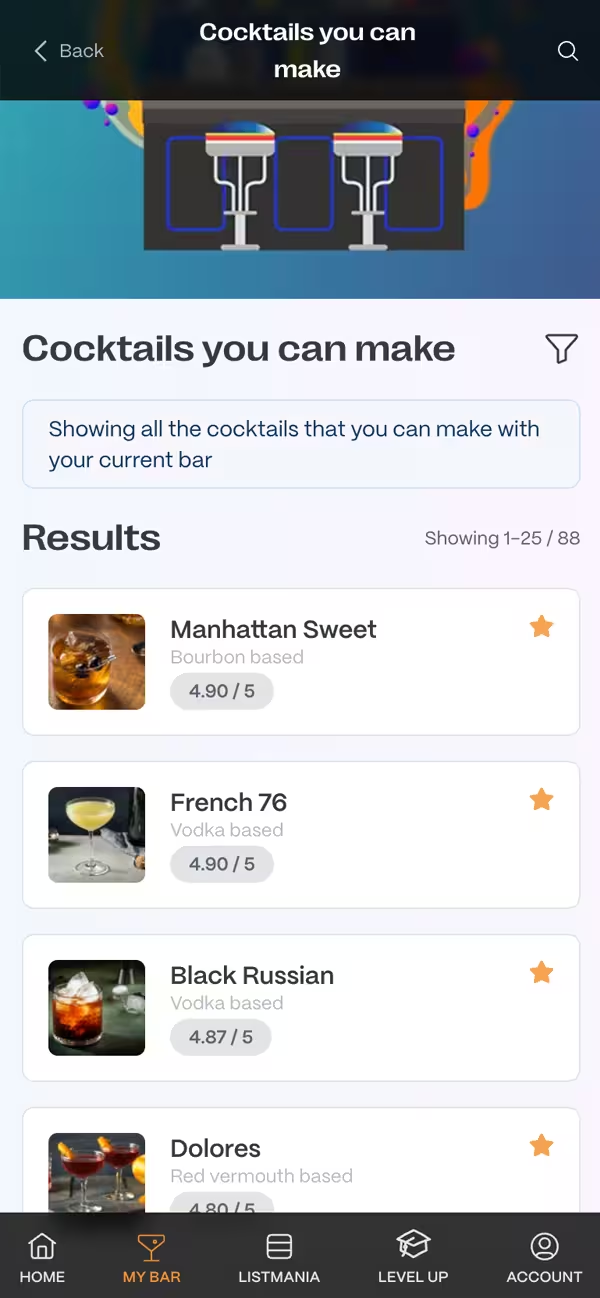Stout
With Stout you can make
We've got 2 cocktails that can be made with Stout.
Find out what to make with Stout
Q&A
What is the history of Stout and how did it come to be used in cocktails?
Stout traces its origins back to England in the late 17th and early 18th centuries. Initially, the term 'stout' was used to describe strong and robust beers, regardless of their color. Over time, it came to be associated specifically with dark, rich beers made from roasted malt or barley. The evolution of Stout into cocktail mixology began as bartenders and mixologists started experimenting with traditional beverages to create new, innovative drinks. The depth and complexity of Stout's flavor profile made it an excellent candidate for this culinary exploration. Cocktails like the Black Velvet, which blends Stout with Champagne, exemplify how this traditionally standalone drink has been successfully incorporated into the mixology world, adding a unique layer of taste and texture to cocktails.
What different types of Stout are there, and how do their flavor profiles differ?
Several varieties of Stout exist, each offering unique taste and aroma characteristics. Dry Stout, notably represented by the famous Guinness, is characterized by its coffee-like bitterness without residual sugar. Sweet Stout, also known as Milk Stout or Cream Stout, contains lactose that adds a creamy texture and a sweet flavor, often with notes of chocolate. Oatmeal Stout is smoother and slightly sweeter, thanks to the addition of oatmeal to the brewing process. Finally, Imperial Stout, also known as Russian Imperial Stout, is stronger in alcohol with a heavy, rich flavor profile often including dark fruit, chocolate, and burnt toast notes. These varieties enable mixologists to select the most suitable Stout type to complement and enhance the flavors of their cocktail creations.
How can Stout be incorporated into cocktails for someone new to mixology?
For those new to mixology looking to incorporate Stout into cocktails, starting with simple, classic recipes is a great idea. The Black Velvet, made with equal parts Stout and Champagne, is an easy yet sophisticated choice. For a richer drink, the Irish Car Bomb combines Stout with a shot of Irish cream and whiskey. To experiment, try adding Stout to a basic cocktail recipe for added depth - for instance, a Stout twist on a Rum and Coke. Begin by adding Stout slowly to taste, ensuring not to overwhelm the other flavors in the drink. These simple steps can help newcomers appreciate the versatility of Stout in mixology.
What are some tips for successfully mixing Stout into cocktails?
Successfully mixing Stout into cocktails involves understanding its unique properties. Start by considering the Stout's body and flavor - denser, richer Stouts might pair better with stronger spirits like whiskey or rum, while lighter Stouts could complement lighter liquors or mixers. When incorporating Stout, consider the drink's texture; Stout adds a creamy, velvety feel that can enrich a cocktail's mouthfeel. To maintain Stout's character, add it to the cocktail last and gently stir to combine without over-mixing, preserving its effervescence and texture. Pairing Stout with ingredients that complement its flavor profile, such as chocolate, coffee, or caramel, can also lead to delightful results.
If I don't have Stout available, what are some suitable substitutions in cocktails?
If Stout is unavailable, similar dark beers like Porter can serve as a close substitution, offering a slightly lighter body but still providing a rich, malty flavor. For a non-alcoholic option, a robust cold brew coffee or a dark, non-alcoholic beer could mimic Stout's deep flavors and bitterness. When using substitutes, it’s important to adjust the quantity and other ingredients in the cocktail to balance the flavors appropriately. Although substitutions may not offer the exact same depth as Stout, they can still create a delightful and complex drink experience.
Ingredients like Stout
How it works
Easily create your bar from the ingredients you have at home, and we'll show you what you can make with the ingredients you have to hand.
Once you've added this ingredient head to your My bar page and fill up everything else you have.
We'll also show you cocktails that can make by substituting what you have for one of the ingredients you don't, riffing on the original. Now go forth and create something delicious!






